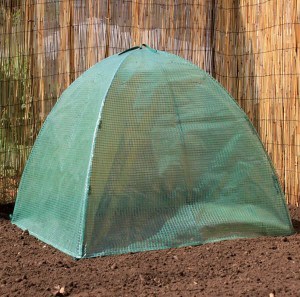The Top 5 Worst Pet Food Ingredients
It should come as no surprise that the cheapest and most widely available pet foods are just as unhealthy as cheap, widely available human foods. Unfortunately, most mainstream foods for cats and dogs are overly processed and don’t even meet animals’ basic nutritional needs.
When we assess pet food, we look for products that most closely mimic what the animal’s diet would be like in the wild. Cats and dogs are both carnivores – in nature their daily diet is high on protein and low on carbohydrates.
Despite the fact that this is widely known, many of the most common pet foods feature recipes that are exactly the opposite – low in protein and high in carbs, chemicals, and preservatives, which are just as bad for your pets as they are for you.
No pet owners intentionally feed their pets unhealthy food; if a dog or cat’s diet is lacking in nutrition, it’s almost always because their owner is either uninformed or cannot afford to regularly buy healthier options. Whichever the case, you should at least avoid buying foods with these 5 harmful ingredients.
Meat “Products”
In a natural setting, your dogs and cats would be eating fresh prey, like rabbits and mice, which are unadulterated, high quality protein. That’s why it’s such a shame that so many brands stuff their foods with extremely low quality meat “products.” Meat by-product and meat and bone meal consist of ingredients that not legally allowed to be put into human food. However, like most harmful ingredients, these products are much cheaper than the real thing.
Both meat by-product and meat/bone meal are made up of all animal parts, such as bones, lungs, feet, heads, intestines and blood. The worst part is that these parts can be taken from any and all animals, including the 4 D’s: dead, dying, diseased, or disabled at the time of slaughter. This meat is almost entirely unregulated and can be contaminated or diseased. No pet owner wants to be feeding their beloved pet such polluted food.
Animal Fat
Animal fat is sometimes known as “tallow” and is derived in a pretty nasty process. When an ingredient is just listed as “animal fat,” and not as a specific type of animal, it is often a generic mix of animal parts, grease from restaurants, or other oils that wouldn’t be allowed to be used in products for humans. The rendering process that results in this fat involves boiling any and all animal parts available along with used restaurant grease. The top layer of fat is skimmed off and used in many pet foods.
Beef tallow is also a common ingredient – it’s used to make low-quality pet foods taste better, but offers no nutritional value. You want to look for pet foods that include specific types of animal fats, such as chicken or poultry fat, which is derived and preserved in a healthy manner.
Corn
Corn and grains constitute large amounts of low-quality pet foods, despite the fact that dogs and cats would not be ingesting corn or grains in the wild. These inexpensive ingredients are used as a cheap filler that helps add substance to the paltry amount of actual protein in the recipe. The corn or grain products are high in calories, so they make dogs and cats feel full, but don’t give them what they need to stay healthy. Given too many carbohydrates, dogs and cats can develop obesity and diabetes
There are many excellent brands on the market that don’t contain any corn or grain fillers. Granted, they are a bit pricier, but that’s because they actually contain high-quality ingredients, which cost more. These options are much easier on animals’ digestive systems and will not cause allergic reactions the way foods with fillers will. Though it may be hard to find these at your standard grocery or convenient store, they’re readily available online or in specialty pet stores.
Sugar
There is absolutely no reason for any type of sweetening agent to be included in your pet’s food. The only reason it’s used at all is to mask the unpalatable quality of the other ingredients and provide empty, cheap calories. Keep an eye out for any version of sugar: cane molasses, corn syrup, sorbitol, fructose, glucose, or propylene glycol. Be sure to avoid any product that lists sugar in the first several ingredients.
If the food has to include sweeteners, you should ask yourself why the food isn’t appetizing enough as is. If it contains high-quality proteins, you won’t be able to keep your furry friends away from it. Also, if pets are regularly fed high-sugar recipes, they can become dependent on sweet foods, making it difficult to transition them to healthier options. Not to mention that excessive sweeteners can eventually cause serious medical problems such as obesity, hypoglycemia, arthritis, tooth decay, and allergic reactions.
Preservatives
Are you starting to see a pattern here? Many of the qualities that make pet food unhealthy are the very same ones that make processed human food unhealthy. Methods of producing food cheaply are very similar across the board, except pets have it even worse. Most common, inexpensive pet foods on your grocery’s shelves feature chemical preservatives like propyl gallate, ethoxyquin, BHT, and BHA. The last two, in fact, cannot legally be used in human products in many countries, but are still legal in the U.S.
All of these chemicals have been associated with dangerous illnesses such as cancer and liver disease. Fortunately, there are some effective preservatives that don’t cause health problems. Look for foods that include natural preservatives: rosemary oil, vitamin E (tocopherols) and vitamin C (ascorbic acid).
Navigating the pet food aisle can be just as challenging as making sense of the rest of the grocery store. Organic? All natural? Low fat? Fat free? Translating food labels is not for the faint of heart. But, you should invest a bit of time finding a high quality pet food that’s convenient and affordable for you to buy on a regular basis.
The best possible option is a BARF (Biologically Appropriate Raw Food) diet, which consists of raw meats, organs, bones and even raw eggs. Following this diet takes some commitment but has a huge payoff: your pets will have far fewer health problems and enjoy their food much more. You can always start the transition by incorporating some raw foods into what you’re already feeding your pets. Check out BARF World to learn more about getting started.
Given that your bet is a beloved member of your family, it only makes sense to take special care in deciding what goes in his little body so that he can stay healthy and happy for many years to come

